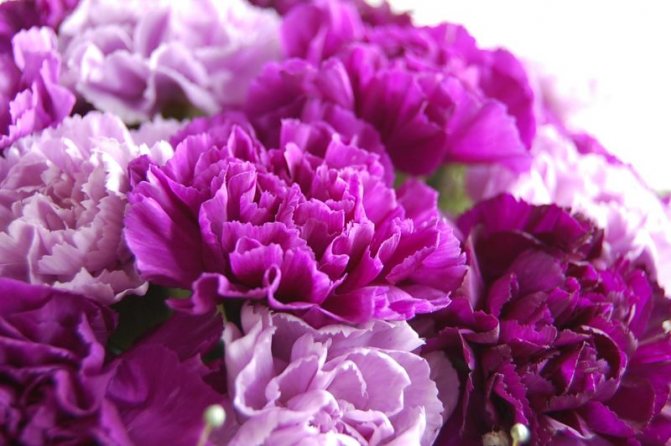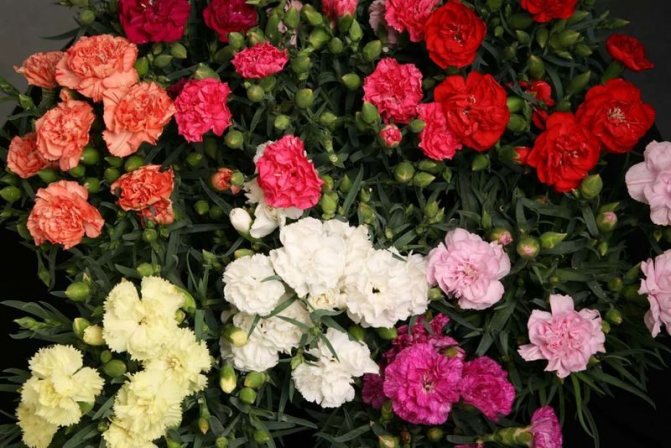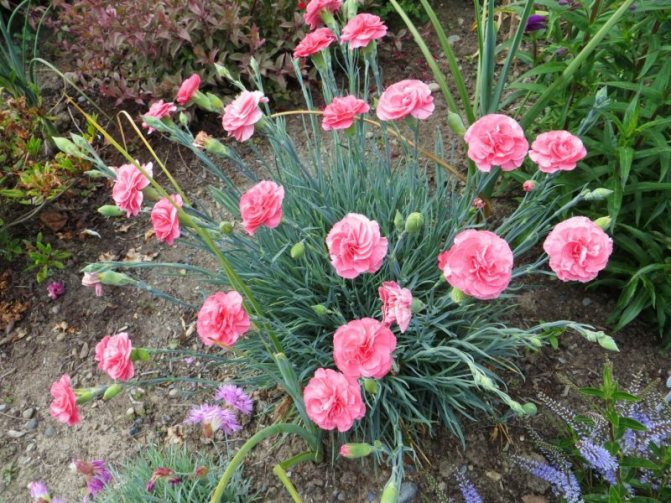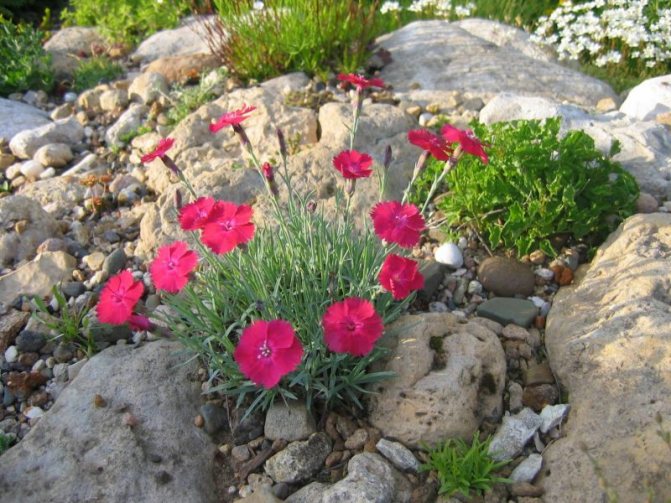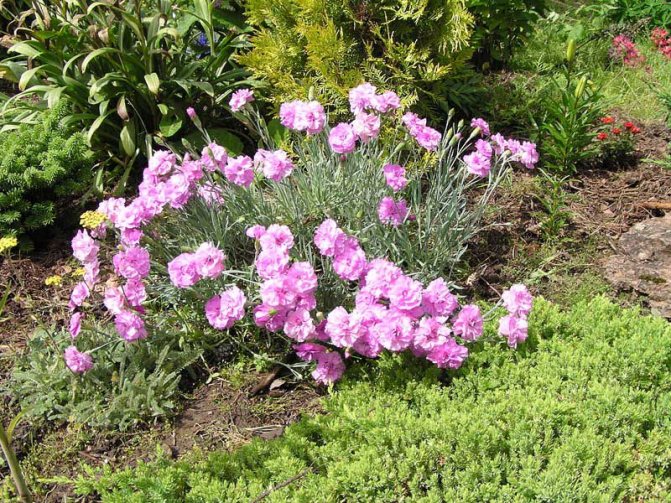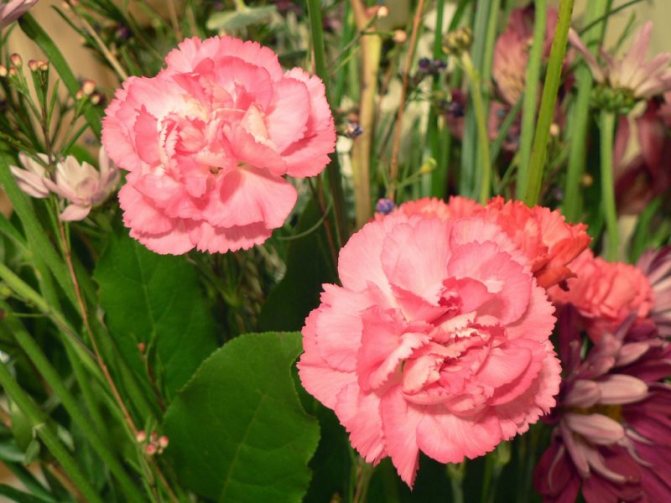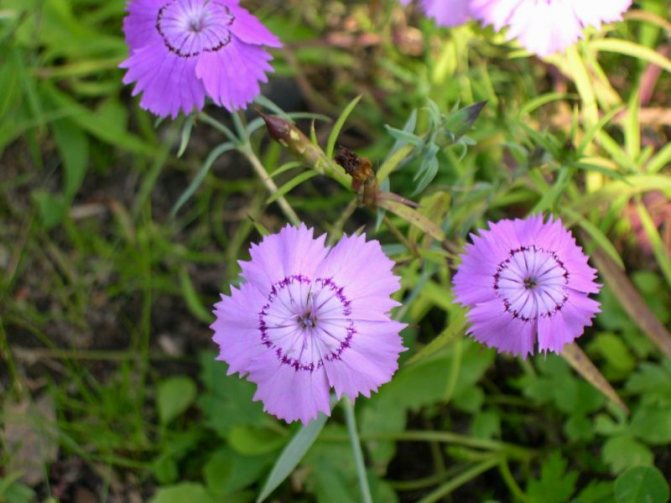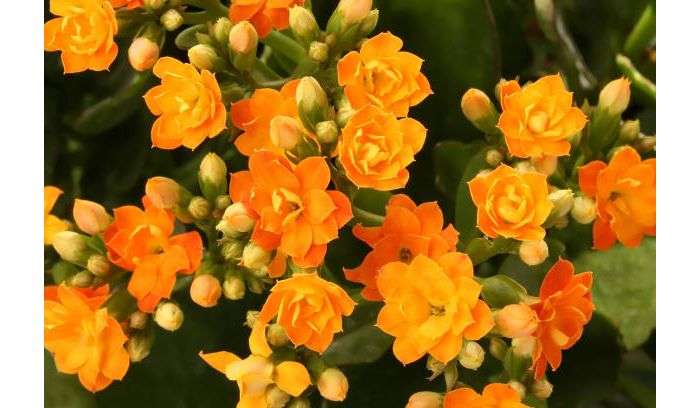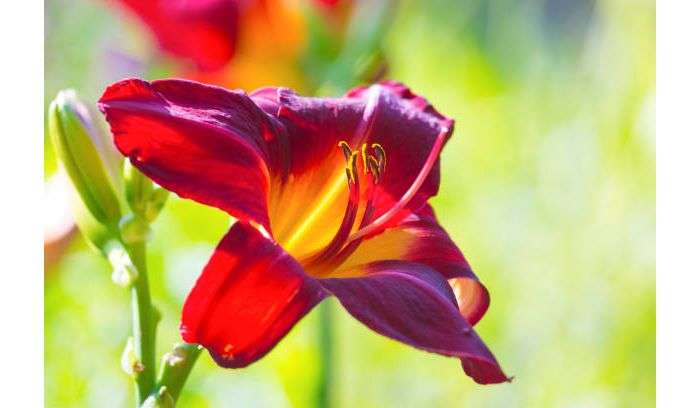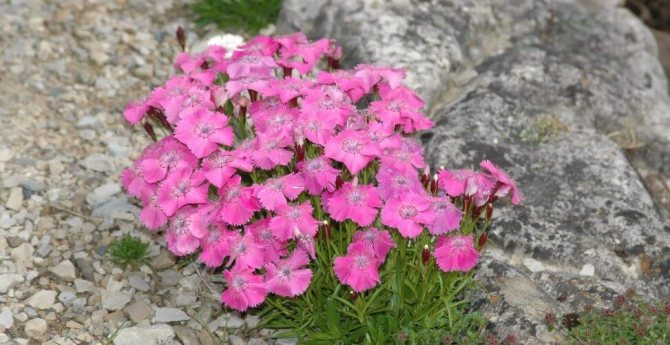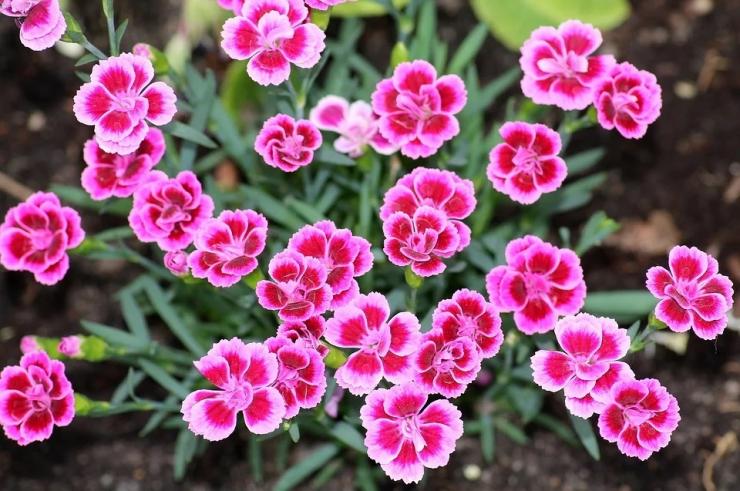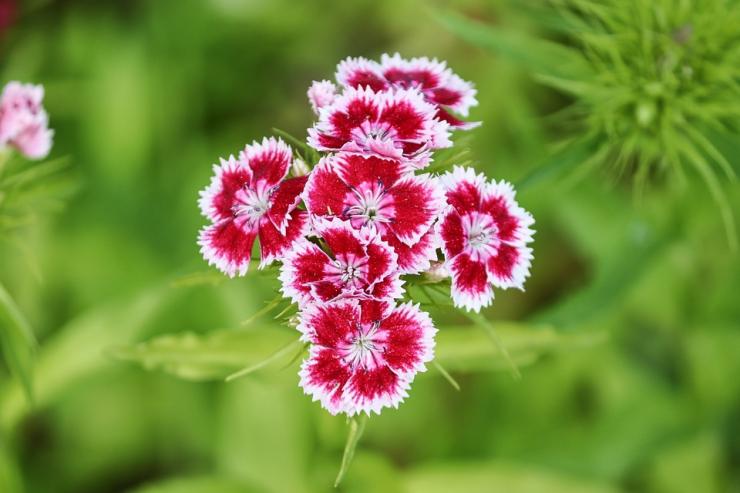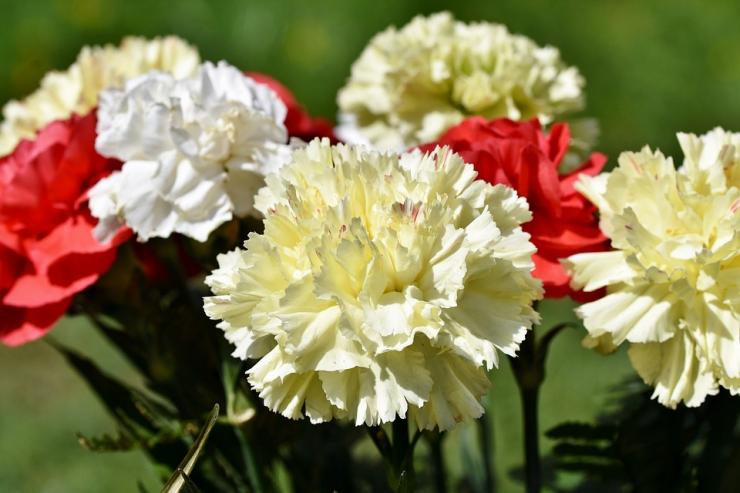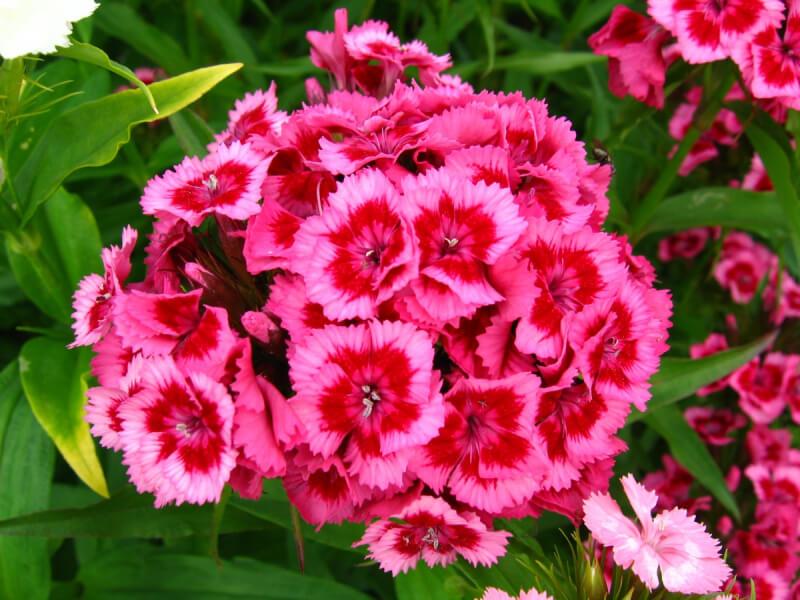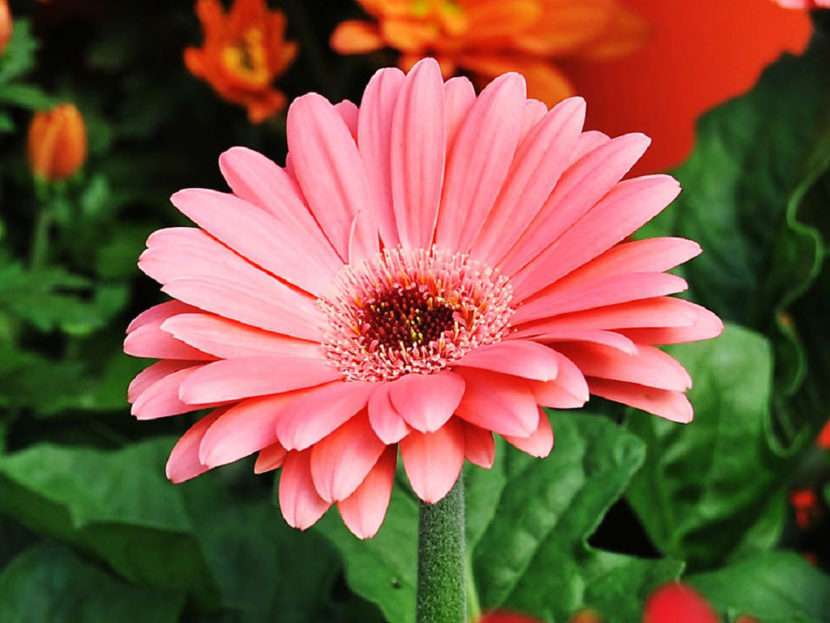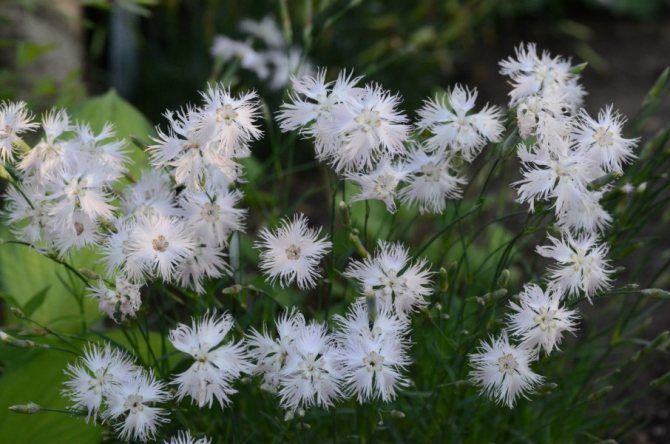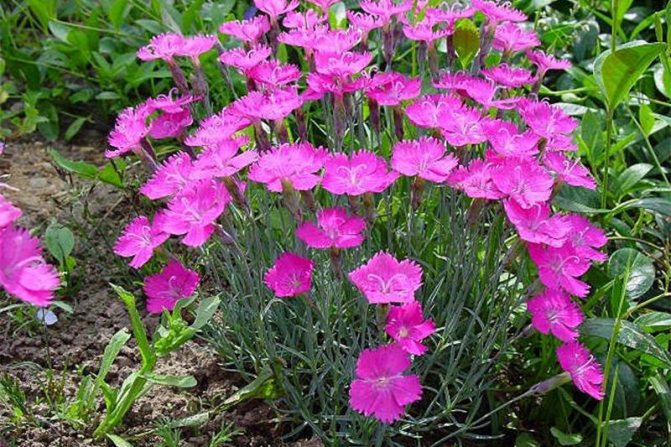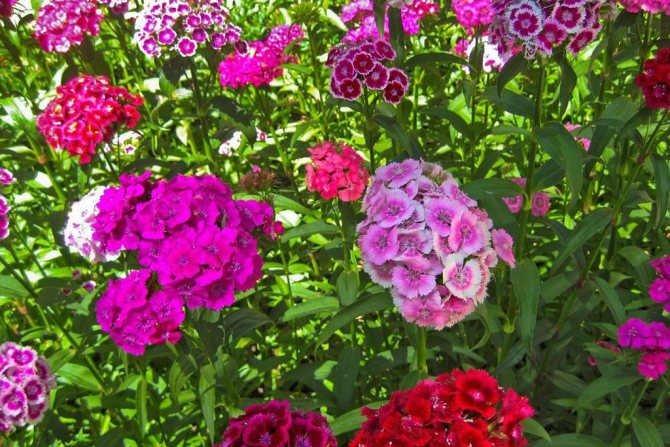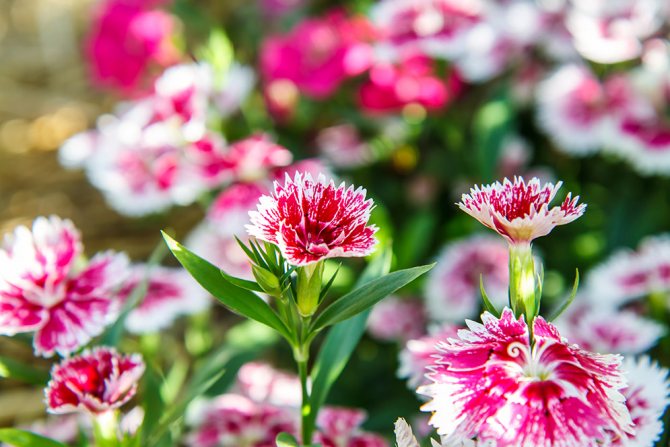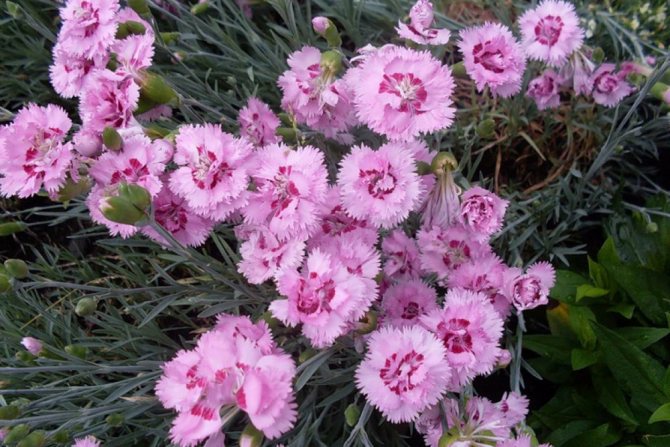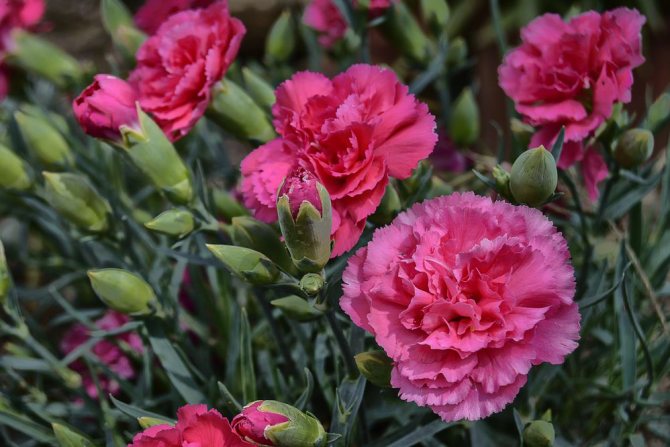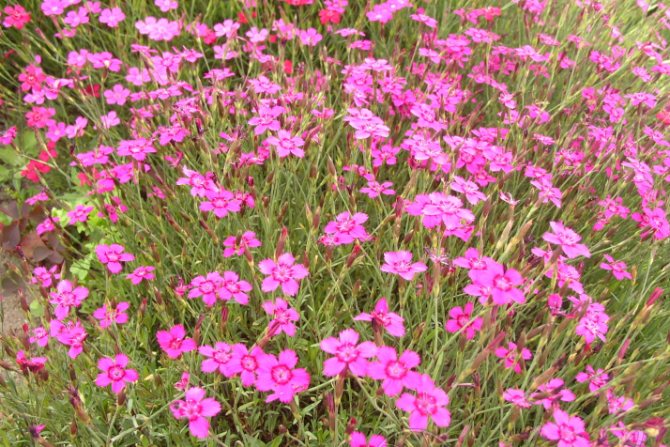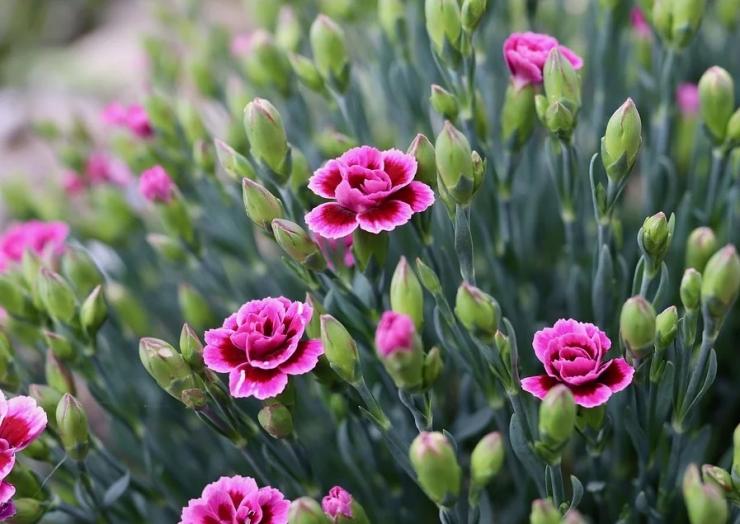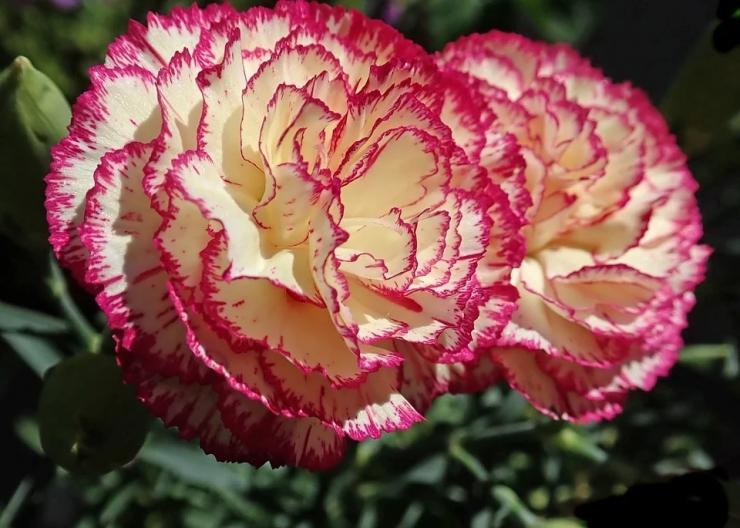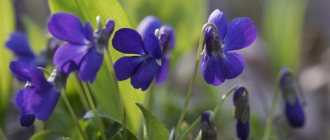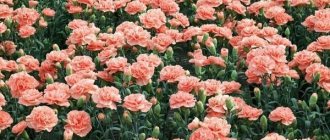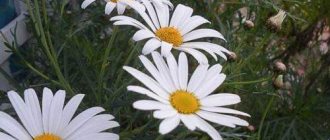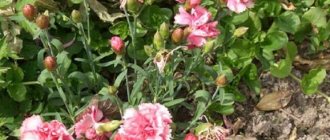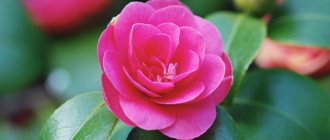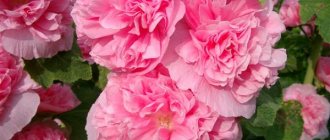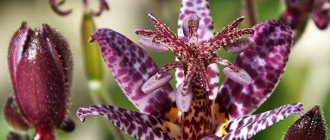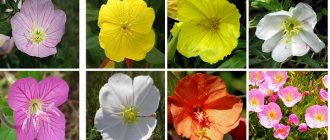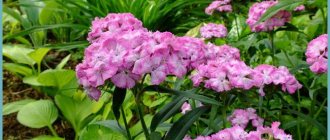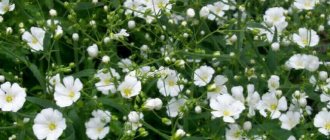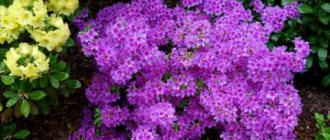For planting mixborders, alpine slides and rockeries - perennial garden carnation is perfect. You will see what a carnation garden long-term planting and photo care looks like here, as well as learn the general rules for growing a flower and the nuances of caring for individual varieties of garden carnation. This is a beautiful, low shrub with a variety of colors, unpretentious in care and planting. The species and varietal diversity of the plant allows gardeners to choose beautiful flower arrangements.
Carnation garden perennial planting and care photo
Pinnate carnation, garden and perennial, in this section - planting and care, as well as its photo. This is an unpretentious plant, but you still need to know a few simple rules to get beautiful, fluffy bushes with abundant flowering:
- when choosing a location, we focus on sunny areas with protection from strong winds;
- the soils should be well fertilized, it is desirable to add manure for planting in the fall. If not, then in the spring of the version of humus for digging.
- we plant seeds in open ground depending on the region. The range ranges from late April to late May.
- when watering, do not overmoisten the soil. They should be frequent, but not abundant.
- cloves are responsive to fertilization, therefore, in the spring we fertilize with nitrogen-containing, in the future versions, superphosphate and potassium fertilizers. Do not forget to add trace elements.
- since the carnation tends to grow, we weed the weeds only under young plants.
- crusts should not be allowed on the soil surface. Regular and shallow loosening of it.
- after the carnation has faded, the aerial part should be cut off, leaving one third in the soil. The next year, it grows into a lush carpet.
- in the southern regions no shelter is required, but in the rest it is required to cover for the winter. Cover with foliage or spruce branches. In the future, shovel up more snow.
Care
Here are some simple tips to help you recreate the blooming atmosphere:
- Watering. The plant is watered sparingly, keeping the soil moist. At the same time, it is important to avoid excessive stagnation of water. Water some selective varieties with a terry structure every week at a rate of 7-10 liters. liquids per 1 sq.m. A day after watering, it will be useful to loosen the soil and supply the necessary elements, such as peat. This avoids unnecessary oversaturation.
- Fertilizer. For feeding, purchased tinctures or mixtures for decorative plants are often used. Before planting seeds, it is recommended to fertilize the soil with a potash solution. After planting and before ripening, the plant is fertilized twice - a week later and during the budding period.
- Tying. During the budding period, it will be desirable to tie the stems to the supports.
- Pruning. For voluminous blooms, cut the buds from the sides of the stems. Blooming flowers are also cut to prolong the flowering period. After the main flowering period, the buds and main stems are shortened.
It is contraindicated to fertilize cloves with manure or products that contain potassium elements. Also, be careful about feeding with nitrogen-containing foods, which can increase the risk of infection with fungal spores.
To continue the flowering period in winter, dig up the plant along with the soil in advance and place it in a ventilated pot. Carnation blooms throughout the winter with the right lighting and indoor temperature conditions - glazed gardens or balconies are suitable for this.
Pinnate carnation is a persistent species that is not afraid of sudden changes in temperature. Also, selective varieties with feathery cloves do not suffer from the effects of cold.
Carnation garden reproduction
Carnation can be propagated in several ways, this is by seed, cuttings and dividing bushes. With the seed method, planting is carried out directly in the open ground or by growing seedlings. For those who want to get flowering in the year of planting, the seedling method is suitable. To do this, pour fertile soil into the container.
Sprinkle the seeds over the surface and sprinkle with sand. Drizzle and cover with foil or glass. The optimum temperature for growing is +18 degrees. After two real leaves appear, the seedlings should be cut into separate containers. The process of growing carnations from seeds at home, see the video.
With the onset of stable heat, we plant the hardened seedlings in open ground. The planting pattern is 30 x 30 cm, taking into account the fact that the plant grows strongly, filling the entire area. Reproduction by cuttings is carried out in early June. They are taken about 5-7 cm long from those stems that do not bloom. They should have 2-3 knots. When digging in containers with loose soil until roots are formed. In the future, carefully transplant it into the soil.
We divide the bushes every spring. Since the plantings thicken in the summer, they need to be planted. Dig out the bush and carefully cut it into several divisions. Seated according to the scheme 30 x 30 cm.
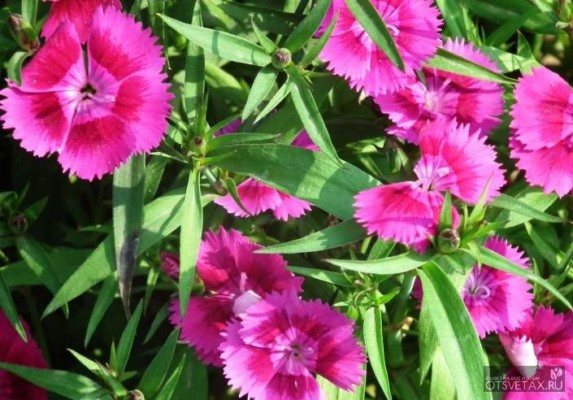
Types and varieties of garden carnation
Carnation Shabo. Ornamental shrubs 20-30 cm tall. In comparison with other varieties of carnation, it has larger inflorescences. Buds are yellow, scarlet, burgundy and pink. They have a persistent aroma. This species is very whimsical. In a perennial form, it is grown mainly in the southern regions. In other areas, it is cultivated in an annual form and in seedlings. In the future, carnation for garden carnations is the same as for other species.
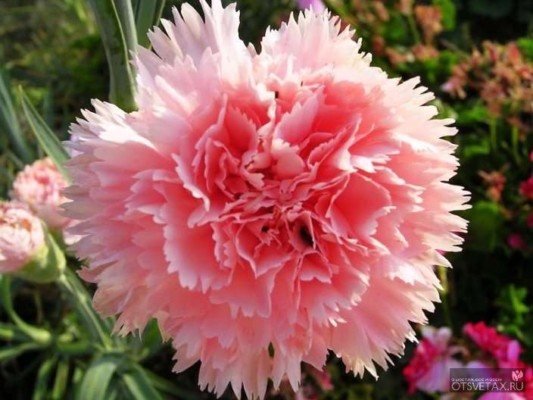

carnation shabo
Dutch carnation. Bushes 30 cm high. Form a solid green carpet with beautiful double flowers. Used to decorate rockeries, curbs and alpine slides.
Turkish carnation. An attractive shrub 25-30 cm with a very persistent aroma. Popular in garden plots. The inflorescences have a tricolor color and reach a diameter of up to 12 cm.
Chinese carnation. Bushes from 10-50 cm. Inflorescences of different colors. White, pink, lilac, crimson, purple and even blue. Some varieties are bicolor. There are small notches at the edges of the inflorescence. In diameter from 1 - 4 cm. Terry, semi-double and five-petal. The leaves are small, with a thin stem with characteristic nodules. Unpretentious and frost-resistant.
The most popular varieties that gardeners use for planting:
- Breath of love, has a high stem, up to 45 cm. It blooms in the year of planting. The flower is simple, narrow at the base and dissected towards the edges. Irregular color. Long-lasting pleasant aroma.
- Spring beauty, short bush, up to 30 cm. Terry. Pink color of inflorescences.
- White ledis, 25 cm, white. Terry, with a brown cup.
- Sam Barlow - double flowers with a brown cup. Long-lasting, pleasant aroma.
It is impossible to describe all types and varieties of perennial carnations in one article. But they all fit well into the landscape design and give beauty and aroma all summer long. How to plant and care for her?
Botanical description
Single, double or semi-double carnation flowers can be the same color, spotted or edged with a different shade. Perennial varieties usually bloom twice a year: in spring and late summer. You can provoke a new growth of flowers by pruning.
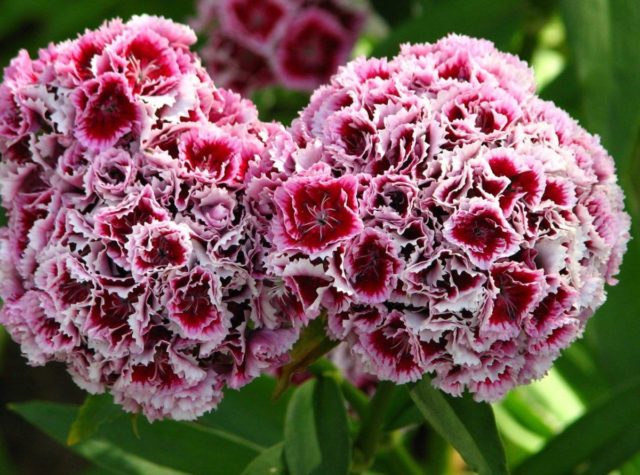

Carnation flowers are characterized by a rich, intense and often tart aroma. The foliage on the plant is linear or resembles a flattened, pointed spear, with a blue-green or gray-green tint and a waxy texture. Carnation grows in almost all latitudes, well repels large animals (deer, elk) and small rodents (vole mice).
The edge of the flowers has a row of fringed petals, giving them a ruffled look. The common Dianthus caryophyllus has a color ranging from deep pink to deep purple, but modern breeders have achieved almost every possible shade, from yellow to white. The first buds bloom from late spring to late summer, and the bluish-green, wedge-shaped foliage remains always green.
They grow in small flower beds up to 80 cm in height. One bunch can contain from 3 to 8 colors. When grown in a garden, the bud can reach 6–8.5 cm in diameter. The petals on carnations are usually clawed or toothed. Certain types of carnation have only 5 petals, which range in color from white to pink or purple. But on average, the most common varieties have about 40 petals.
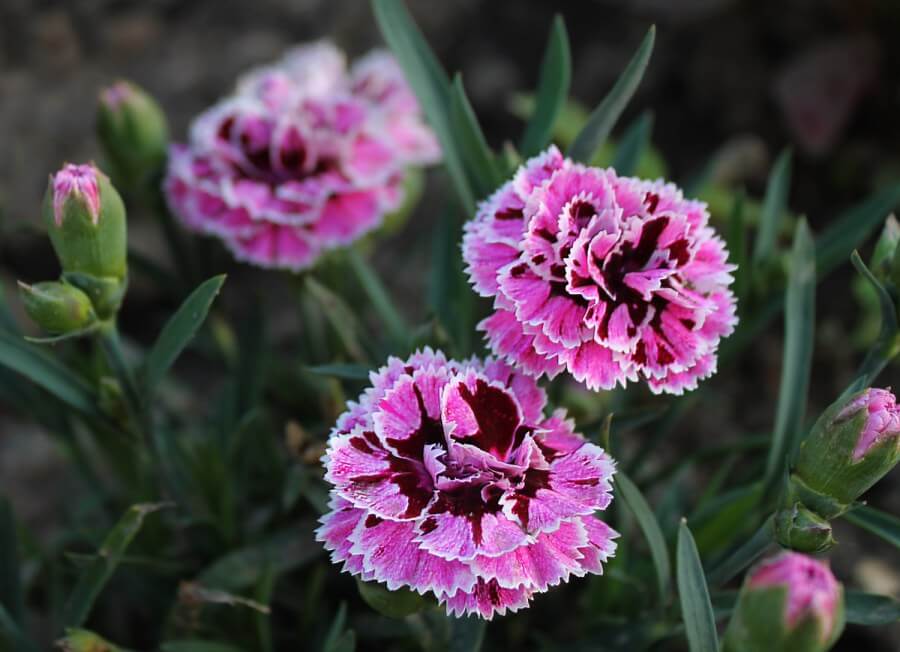

Good to know! Most species prefer to grow in open sunlight in neutral to slightly alkaline, well-drained soil that is not mulched. Perennial plant varieties are propagated from seeds, as well as by dividing the rhizome or planting cuttings.
Carnations are bisexual flowers and bloom in a branched or bifurcated bunch. Stamens on carnations can be found in equal numbers or twice as many petals.
Pinnate carnation, G. Chinese, G. Turkish: planting and care photo
Growing carnations consists of:
- sowing seeds for seedlings;
- choosing a place for landing;
- planting in open ground;
- glaze;
- loosening;
In order for the carnation to bloom in the year of planting, it is best to plant it with seedlings, although many varieties can be planted in open ground with seeds.
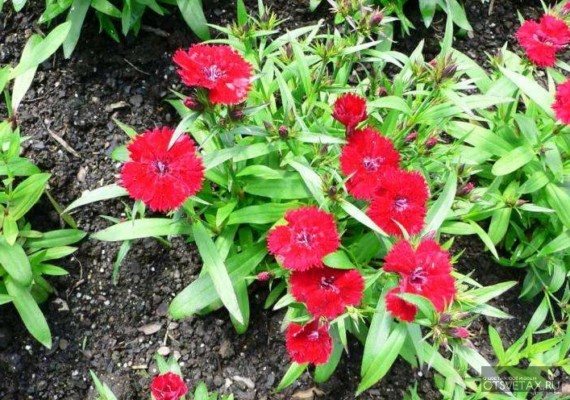

chinese carnation
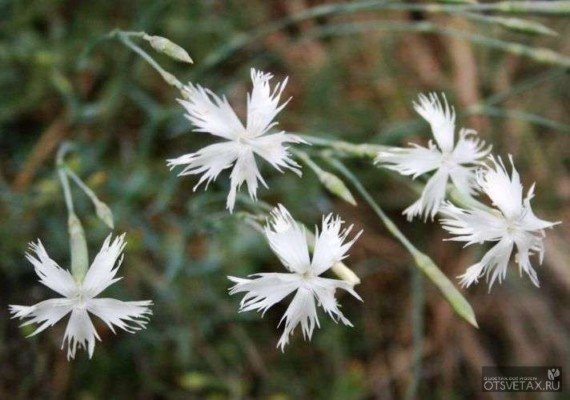

pinnate carnation
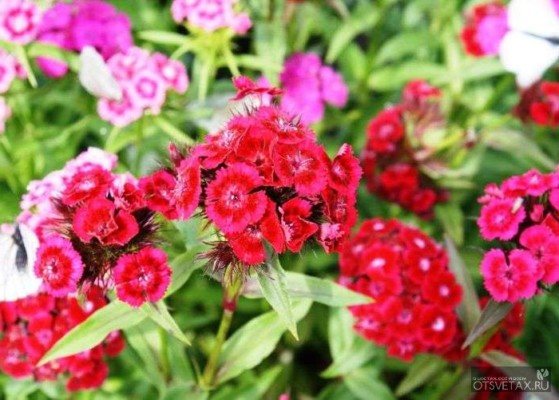

turkish carnation
Preparing for winter
Garden carnation is characterized by good frost resistance, and therefore tolerates winter cold quite easily. If the winter turned out to be snowless, then in this case it is recommended to cover the bushes with spruce branches or sawdust. This event will help prevent freezing.
On a note! In addition, when growing garden carnations for several years, it is recommended to transplant the bushes to a new place from time to time. This is done, as a rule, in late July - early August.
Planting a perennial carnation. Photo
Sowing seeds for seedlings is done in March. Take the prepared container. Pour fertile soil into it. Add sand and peat to the soil. Drizzle with a weak solution of manganese for disinfection. Drizzle. We will also process the seeds with manganese in order to exclude further diseases. Spread the dried seeds over the surface. Sprinkle with sand on top. Cover with glass and keep at t + 18 ° С.
When shoots appear, it is better to remove the seedlings in a cool, lighted place. Temperature + 12 ° С. If the lighting is not enough, the seedlings should be supplemented with a lamp so that they do not stretch out. When two true leaves appear, the seedlings are dived into separate cups.
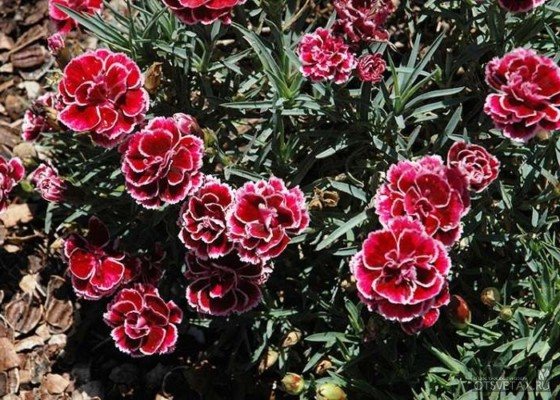

When the seedlings grow to five leaves, they should be transplanted in a larger container. For better bushiness, pinch the growing point. From this time, start hardening the seedlings. Move it to a cool, well-lit place.When the time for return frosts has passed, transplant the seedlings into open ground.
For cloves, it is best to choose fertile loams. If the soil is acidic, add wood ash when planting. The site must be well lit. Carnation looks great on the alpine slides, along the garden paths. Flowers are responsive to feeding. Add humus for digging during planting, in the future we add complex mineral fertilizers. Add boron, zinc, molybdenum to them.
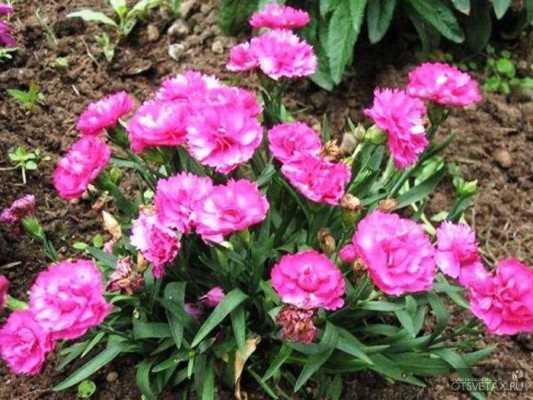

Plants should be fertilized in the spring, as soon as the flowers begin to wake up after winter dormancy. During flowering. And after cutting off the faded buds, so that the plant gains strength to restore new green mass. Fresh manure should not be applied under carnations. Over-saturation of the soil with organic matter will reduce the number of flowers and increase the green mass.
Cloves do not tolerate waterlogging, so the soil on the site must have good drainage. Regular loosening. A crust should not be allowed to form on the surface.
Fertilization and feeding
Perennial carnation, like any ornamental plant, needs additional feeding throughout the vegetative period. You need to feed it first in the spring, then at the time of the appearance of buds and, of course, when the color appears.
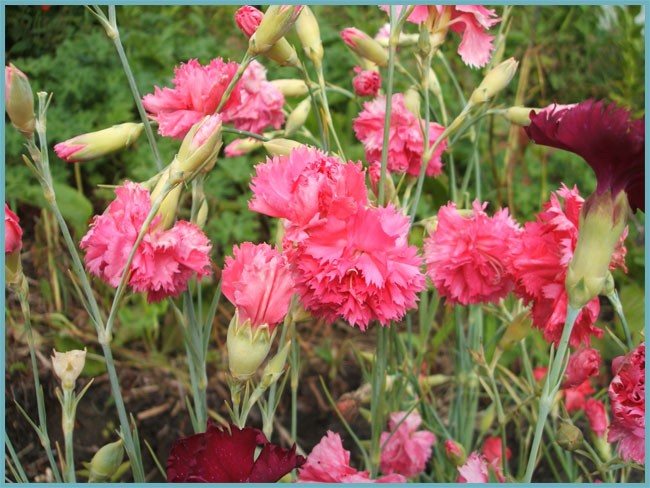

Remove weeds so that they do not interfere with the development of the plant Attention! Do not use fresh manure and potassium based fertilizers! Be careful with the amount of nitrogenous feeding applied: excessive amounts of it can cause fungal diseases.
Garden carnation also responds well to mineral fertilizing.
Pests, diseases of garden carnation
Like all garden plants, carnations are also subject to disease and pest attacks.
Caterpillars scoop. You can see them in the evening when they go out to eat. The attack of caterpillars occurs at the time of budding. At this time, they are harvested by hand or sprayed with drugs. “Intavir” and “Iskra” help a lot in this.
Thrips. When attacked by these pests, whitish spots appear on the plant, later they are deformed and lose their beauty. Such plants should be removed and burned. The site is sprayed several times, since it is impossible to get rid of thrips at one time.
Gall nematode. This pest damages the roots of the carnation, as a result of which, the plant completely dies. Signs of damage are growth retardation and leaves turn yellow. When viewing the roots, swelling is visible. Nematode larvae live in the soil for years. When conditions are favorable for them, they infect plants.
Affected plants are removed from the site and burned. The soil is disinfected. It is also possible to water the soil with boiling water several times. After flooring or boiling water, cover the soil with plastic wrap. This is done so that the soil is exposed to hot temperatures for as long as possible.
In order to get rid of them, nematicides should be added to the soil several times. Sowing watercress among cloves helps a lot against nematodes. It is sown 2-3 times per season.
To keep the plants healthy, they should not be planted on very wet soils. This is how plants get sick with high doses of nitrogen fertilizers. They get sick from various bacterial and fungal diseases.
South sclerocial rot. It can be recognized by the pale color of the plant. From below, it becomes brown in color on which a white coating similar to cotton wool appears.
Phialophorosis. With this disease, the plant turns yellow and withers. Some of the leaves take on a reddish tint. If the carnation is cut, the brown rings will be visible.
Rhizoctonia. In a carnation, the stem rots in the lower part. The supply of food stops and the flower dies. A brown plaque appears at the root collar. Has a dense, felt consistency.
Verticillary wilting. Leaves without color change have a drooping shape.Pink bloom on the stems.
Fusarium wilting. Diseased plants have yellow leaves. They are wilted with signs of wilting. Subsequently, the plant acquires a brown color. Fungal spores are present on the leaves and stems. In the form of pink pads. To avoid this disease, fresh manure should not be applied.
Fusarium spotting. The disease is caused by the fungus Fusarium and usually occurs in conjunction with Fusarium wilting.
In landscape design
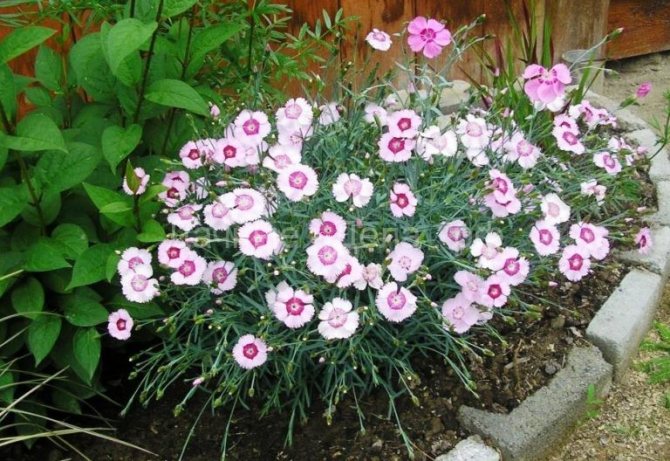

Carnation is well suited for landscaping any area. Since the long-term carnation subsequently blooms for the second time after pruning old pleiochasia, it is very comprehensively used to decorate flower beds, gardens, summer cottages, parks. A carnation will certainly fill the yard with scent, and bright, rich colors, if you take good care of it. The maintenance does not take much effort, the sowing is very simple and the seed adaptability is good. The main condition for good growth and development of plants is a sunny place without stagnant water in the soil.
How to protect garden cloves from disease
To avoid diseases and have healthy plants on your site, you must follow the following rules:
- process planting material in a weak solution of manganese or special solutions, which can be bought in garden stores;
- loosening should not be deep. Otherwise, you will damage the roots of the flower and fungus and bacteria will get into the wounds;
- three, four times a week, the soil should be watered with fungicides or a manganese solution.
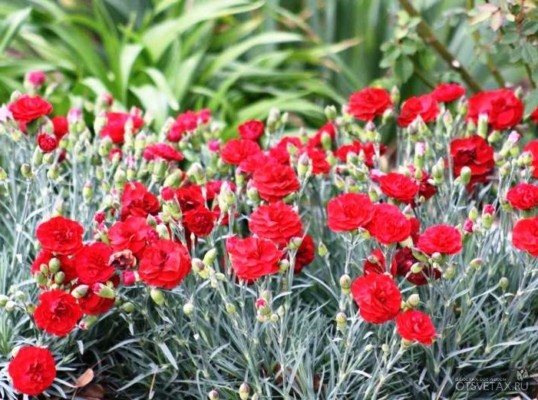

For any signs of disease, the plants should be watered with special preparations. Water the entire plant. Also, do not forget to water the soil. Those plants that are badly damaged should be removed from the site. They must be burned so as not to spread disease throughout the garden.
Carnation care in flower beds
Despite the unpretentiousness of this plant, it still needs some care.
One of the important points is watering. For cloves, it should be moderate.
Important! This plant tolerates light drought better than excessive waterlogging of the roots.
Also, for abundant and prolonged flowering, fertilizing with mineral fertilizers should be regularly carried out. It is better not to use organic fertilizing, only the use of compost in limited quantities is permissible.
Some species, such as perennial bush carnations, require support and a garter. The fragile shoots can break under the weight of the inflorescences, so they should be carefully tied to a support. It is better not to tighten the fastening tightly so as not to damage the stems.
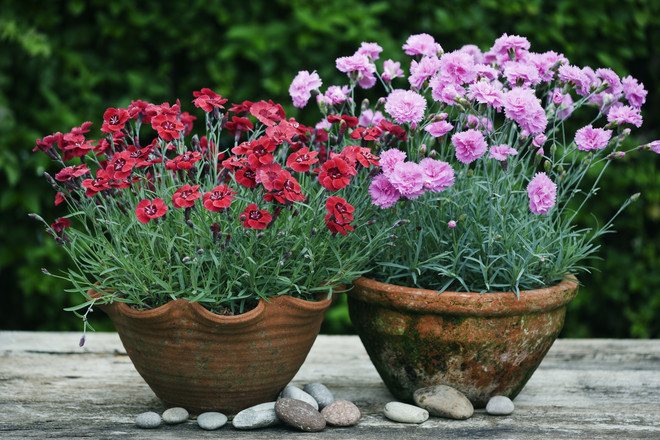

Garden carnation in flowerpots

